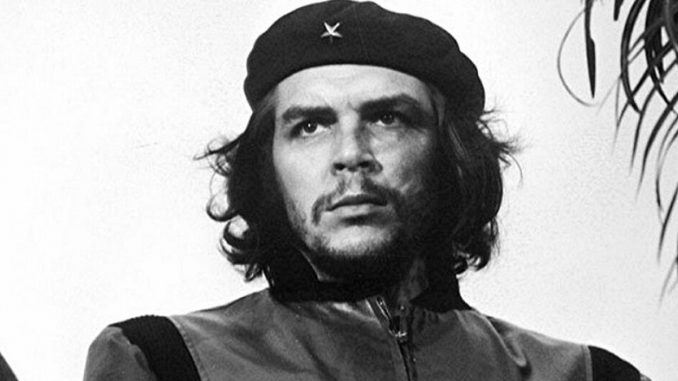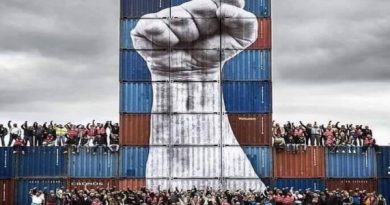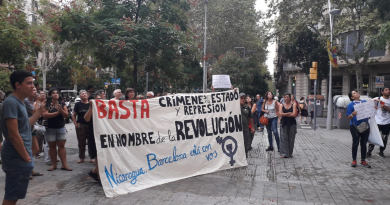The "Che" Guevara: revolution symbol
He 8 October 1967 falls wounded in combat and Ernesto Guevara is arrested, "Che". The next day he is shot, photographed and displayed as a trophy by members of the Bolivian army and the CIA, to later be buried in a common grave pretending with that act to make disappear much more than a body. They never made it. Che had already occupied a place in millions of young people and workers around the world, and it became a myth, in icon, guiding star of rebellion and revolution.
Che was born in Rosario, Argentina, in 1928 in the bosom of an upper middle class family, linked to different businesses and ventures, that took them to visit different parts of the country until arriving in Córdoba due to Ernesto's health problems, who was diagnosed with asthma. Later they settle in Buenos Aires, where the medical career begins at the UBA. By then his adventurous spirit led him to travel the country on a moped and embark on the merchant marine. Then he made the famous trip through Latin America with his friend Alberto Granado. There he is soaked in the reality of the continent, from the workers, from the extreme misery of various places, learn about the inhumane working conditions of Chilean miners, collaborates with a leper colony in Peru, among other experiences. Back in Argentina, he completes his career and receives a Doctor's degree.
He then embarks on a new trip with the intention of meeting again with Granado who was in Caracas.. Is the year 1953 and Latin America is convulsed by social struggles. Che spends time in Bolivia -which is still shaken by the revolution of the 52- where he meets Ricardo Rojo, with whom he continues the trip through Peru and Ecuador. The coup d'état organized by the CIA against Jacobo Arbenz in Guatemala has a great impact on him and joins the resistance in that country. In this time he deepens his political ideas, learn more about socialist theories, see the processes that are taking place in Latin America and Central America, the power of Yankee imperialism and its intervention in the coups d'état and the policies of the countries. This course ends in Mexico, where it consolidates its ties with Cuban exiles., and ends up joining the Movement 26 July directed by Fidel Castro.

Militant internationalist
This movement is the one that landed in Cuba and that after a long course and several times on the verge of failure, would achieve in the early days of 1959 defeat the Batista dictatorship, accompanied by popular support, worker and peasant, the development of strikes and the growth of this movement.
Consummate the Cuban Revolution, Che Guevara would hold various positions in the government, as Minister of Industry, President of the Central Bank and one of those in charge of foreign relations of the new government. Already with the Revolution declared as socialist, Che travels to Algiers, to the Congo and Angola to develop and collaborate with the insurgent forces of that country. Differences with Fidel and with the Stalinist regime of the Soviet Union are beginning to become visible, whom he denounces for his role in the Vietnam War: “US imperialism is guilty of aggression; their crimes are immense and spread throughout the world. We already know, Sirs! But also guilty are those who, at the moment of definition, hesitated to make Vietnam an inviolable part of socialist territory., in a hurry, So, the risks of a global war, but also forcing a decision on the US imperialists. And those who maintain a war of abuse and tripping that began a long time ago by the representatives of the two greatest powers of the socialist camp are guilty..”[1]
In that same conference I would say that"Create two, three ... many Vietnam is the watchword "
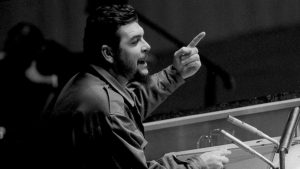
With these words, Che showed that his process of political evolution not only transformed him into an increasingly consistent internationalist., but at the same time it distanced him from the nefarious role of the Soviet Union and the approach to it that was accentuated in the Cuban government.
Consistent with this idea, he decides to start the path for a new insurrection in Latin America in Bolivia., where it meets its end.
some debates
Claim the Che, his figure, his revolutionary trajectory and his legacy does not mean worshiping personality and uncritically accepting all his conceptions as if they were infallible recipes for all times and places. For those of us who fight to end this system, it is about rescuing the successes without ceasing to question what we consider to be wrong conceptions., with the aim of strengthening revolutionary action.
From the Cuban experience, Guevara made the method of guerrilla warfare a theory: the guerrilla focus. Many organizations throughout the world adhered to this focus theory., mainly from Central and Latin America. At a time of rise of workers resistance, of dispute and polarization, with dictatorial governments stalking the continent, There were not a few discussions and polemics that arose among the left currents, the avant-garde and activism. Our current then held a tough debate with the foquismo, questioning the fact that he intended to mechanically transfer the guerrilla experience to the different realities of America, elevating the peasantry as the revolutionary vanguard without taking into account the particular analysis of each country, separating from the labor movement, absorbing the best activists for this policy and acting separately from the mass movement, and many times in his name but without having consulted or being part of the workers' organizations. History showed that this theory that elevated the guerrilla tactic to strategy, ended up failing in almost the entire continent, causing the death of thousands of dedicated and brave fighters. Che did not give importance to the construction of revolutionary parties either., the other strategic task together with the mobilization of the working class. The combination of these political deficits led those who blindly followed him to not be able to find new triumphs in the following years..
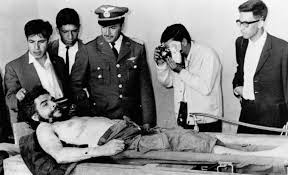
Despite these debates, we never stop recognizing the worth of Che Guevara. In his work entitled “Guevara: hero and martyr of the permanent revolution ”Nahuel Moreno said“Guevara, that life was risked how many times it was necessary, until losing it, for the Cuban and Latin American revolution, he was not afraid to face and respond to the most serious problems posed to the revolution. From the defense of Cuba to the construction of socialism in the transition stage, going through the economic relations between the socialist countries, there was no critical issue in the workers' struggle that Guevara did not address, to give you a way out: the permanent revolution. "[2]
Socialist revolution or cartoon of revolution
But if something stands out from Che, it is their consistent struggle for a society without exploitation or violence, for a socialist society. Within the framework of a world marked by the Yalta and Potsdam agreements, that of the peaceful coexistence of the Soviet bureaucracy that justified the abandonment of the struggle for socialism in the semi-colonial countries with the theory of the revolution in stages, Che was a rebel. To those who, out of skepticism or because of their identification with Stalinism, argued that Latin America was not ripe for socialism and were seeking agreements with the progressive national bourgeoisies"On the other hand, the autochthonous bourgeoisies have lost all their ability to oppose imperialism and only form their caboose.. There are no more changes to make; or socialist revolution or caricature of revolution. "[3] How much validity does that phrase have when, again, there are those who from the left, progressivism, insist on being the caboose of the national bourgeoisie!! To vindicate Che in these times means for us to place the struggle for socialism as a possible horizon, with his strength and his conviction.
A 53 years of his assassination we want to remember that revolutionary, that today is the flag in all the struggles throughout the world, that was sown and blooms every time a young man goes out to fight, every time a worker decides to go out and defend his rights, every time your image, that image eternalized by Korda, becomes a shield in the face of injustice. We remember him recovering the words he dedicated to his children when he left Cuba to internationalize the revolution and that they are a guide: “Grow up as good revolutionaries. Study hard to be able to master the technique that allows you to master nature. Remember that the Revolution is what is important and that each of us, solo, it's worth nothing. Above all, always be able to feel deeply any injustice committed against anyone in any part of the world. It is the most beautiful quality of a revolutionary.”[4]
Juan Bonatto

